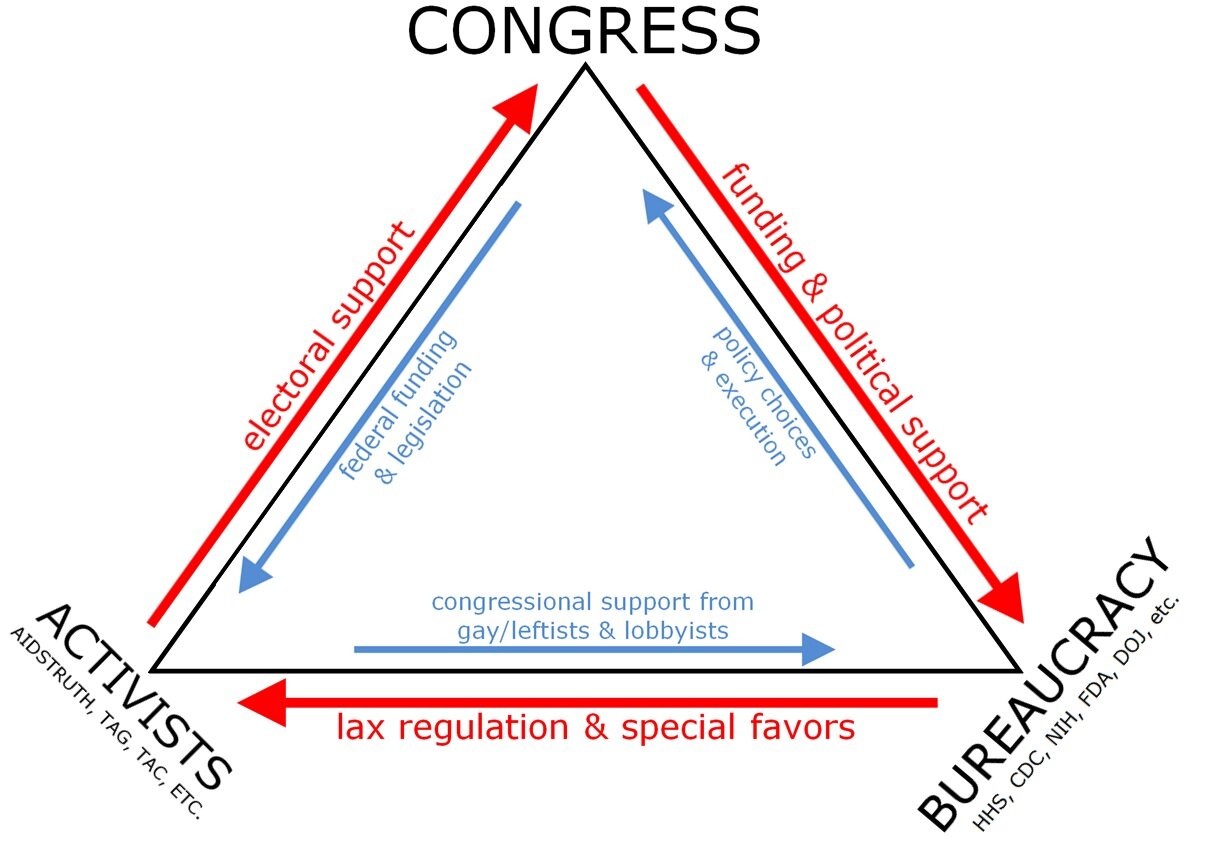Professor Paul Johnson describes iron triangles as “closed, mutually supportive relationships between government agencies, special interest lobbying organizations, and the legislative committees or subcommittees with jurisdiction over a particular functional area of government policy.
Prof. Johnson writes:
“As long as they hang together, the members of these small groups of movers and shakers tend to dominate all policy-making in their respective specialized areas of concern, and they tend to present a united front against “outsiders” who attempt to invade their turf and alter established policies that have been worked out by years of private negotiations among the “insiders”…
These triangles are said to be “strong as iron” in that these mutually supportive relationships are often so politically powerful that representatives of the more general interests of society are usually effectively prevented from “interfering” with policy-making altogether whenever their concept of the general interest runs counter to the special interests of the entrenched interest groups, bureaucrats and politicians. (more here)
The pharmaceutical “iron triangle” consists of congressional leaders who fund the Department of Health and Human Services (HHS), the Centers for Disease Control (CDC) and the National Institutes of Health (NIH).
Because infectious disease became statistically irrelevant in the US by 1955, the HHS, CDC and NIH pay activist organizations like TAG, HousingWorks, DC Fights Back to coerce and threaten anyone who threatens the billions of dollars wasted by these agencies EVERY YEAR. Targets include congressman, politicians, theologians, public speakers and judges.
For example, when Congress threatened to reduce AIDS funding, protesters funded by the CDC (e.g. taxpayers), the U.S. Department of Housing and Urban Development (HUD), the New York State Department of Health. among others made noise:











